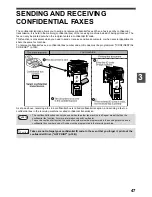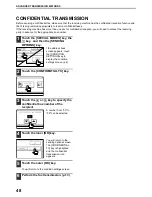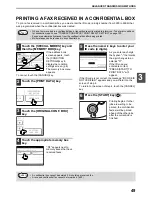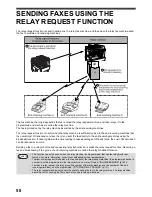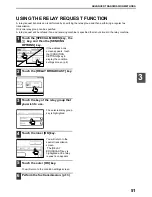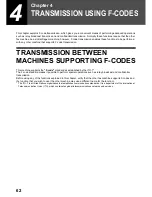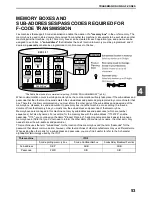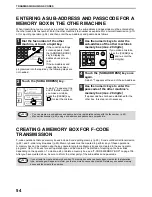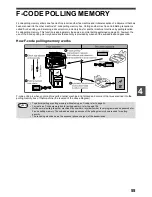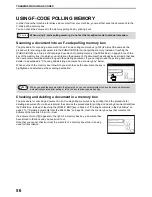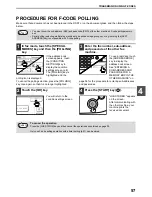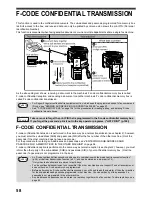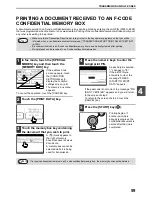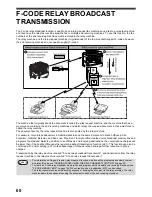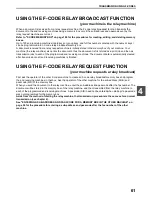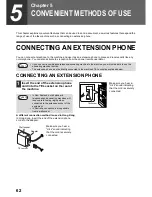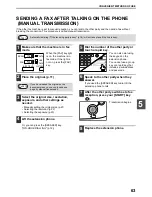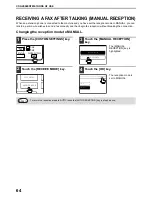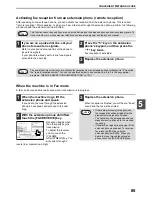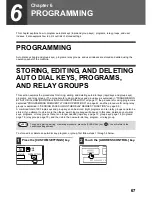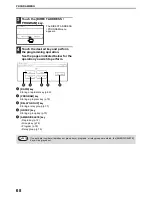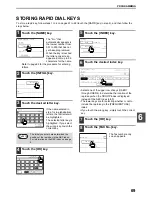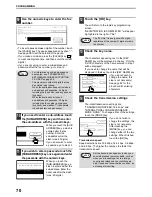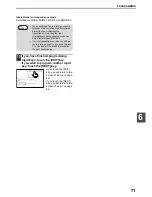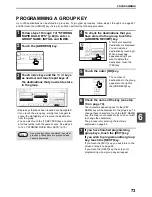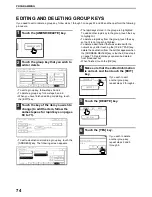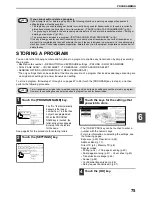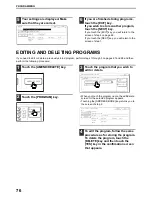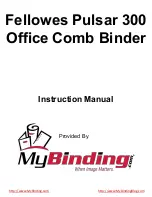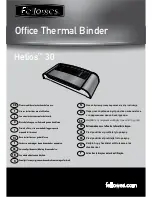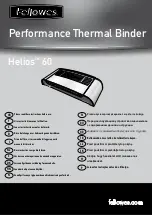
61
TRANSMISSION USING F-CODES
4
USING THE F-CODE RELAY BROADCAST FUNCTION
(your machine is the relay machine)
When a document is received from a relay request machine, the F-code relay broadcast function transmits the
document to the end receiving machines using a memory box only if the sub-address and passcode sent by the
relay request machine are correct.
Refer to "F-CODE MEMORY BOX" on page 106 for the procedures for creating, editing, and deleting memory
boxes.
Up to 120 end receiving machines (rapid keys or group keys, and full fax numbers entered with the numeric keys)
can be programmed in an F-code relay broadcast memory box.
A document received from a relay request machine is initially stored in the memory box of your machine. Your
machine (the relay machine) also prints the document, thus the document is first stored as a print job and then as
transmission jobs to each of the programmed end receiving machines. The document data is automatically cleared
after transmission to all end receiving machines is finished.
USING THE F-CODE RELAY REQUEST FUNCTION
(your machine requests a relay broadcast)
First ask the operator of the other F-code machine to create an F-code relay broadcast memory box and program
the end receiving machines in that box. Ask the operator of the other machine for the sub-address (SUB) and
passcode (SID) of the memory box.
When you send the document to the relay machine, enter the sub-address and passcode after the fax number. The
document will be stored in the memory box of the relay machine, and then transmitted from the relay machine to
each of the programmed end receiving machines. A passcode (SID) need not be entered when dialling if a passcode
was not programmed for the memory box.
Aside from the method of dialling the relay machine, the transmission procedure is the same as for a normal
transmission (see chapter 2).
See "ENTERING A SUB-ADDRESS AND PASSCODE FOR A MEMORY BOX IN THE OTHER MACHINE" on
page 54 for the procedure for entering a sub-address and passcode after the fax number of the other
machine.

